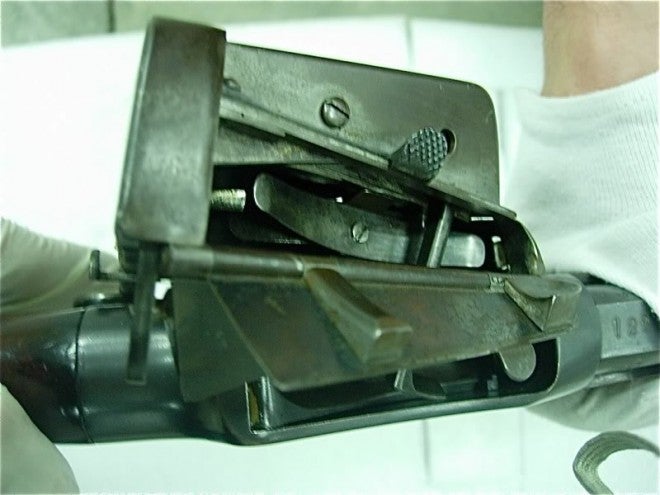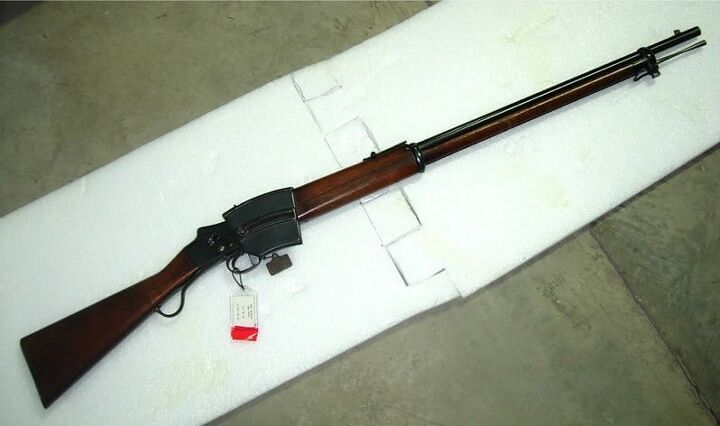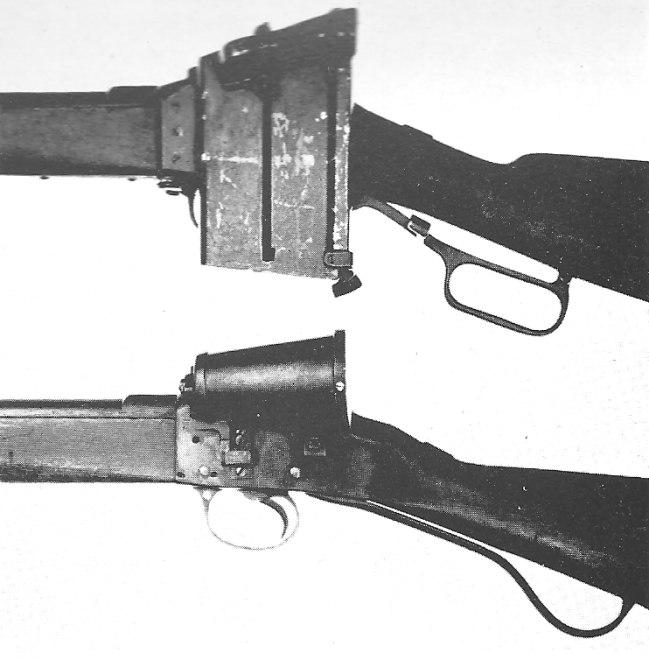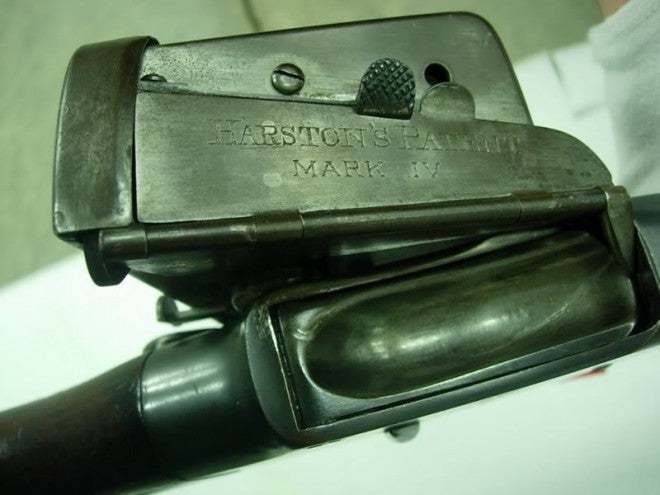The story of modern British small arms is one of cleverness and perseverance, but mostly of seemingly continual obsolescence. Like the later Lee design, the Martini-Henry is yet another entry into the book of British rifles that were relatively quickly obsolesced by foreign developments, but which – in typical British fashion – soldiered on regardless.
The fading edge of the Martini rifle was not lost to the designers living in the sprawling British Empire, at least three of whom designed ingenious conversions to turn the venerable rifles into faster-firing magazine-fed weapons. Two cases are the subject of a recent Firearms Curiosa post:
Martini-Henry Quickloaders
The British Army officially adopted the breechloading Martini-Henry rifle in 1871, and it served valiantly throughout several wars, but it was not without issue. The main problem with the Martini-Henry was that it was single-shot, and thus made redundant almost as soon as it was adopted, thanks to the advent of the magazine-fed rifle. It was withdrawn from service in the late 1880s and replaced by the 10-shot Lee-Metford, the predecessor to the Lee-Enfield.
During its service lifetime, however, some attempts were made to convert the Martini-Henry into a magazine-fed rifle. Being a breechloader, this was difficult – but it proved possible. Charles Greville Harston of Toronto managed to create a spring-loaded magazine that would feed rounds into the breech of the Martini-Henry, thought the user would have to keep the rifle steady to avoid cartridges accidentally falling out. Another design incorporated a rotary drum magazine that fed rounds into the breech through gravity. Ultimately it was more convenient to adopt an entirely new rifle than to convert every existing Martini-Henry.
The Hartson device was quite clever. From martinihenry.org:
Weapon OverviewThe Hartson quick loader, patent 14650 awarded to Captain C.Greville Hartson of the Royal Grenadiers, Toronto, in October 1887. Hartson approached the War Office in June 1887, In May 1888 the samples were delivered to the War office and in June 1888 three Martini Henry rifles and 2000 rounds of ammunition were delivered to the Henry Rifled barrel company at the Blenhiem Works for conversion, During 1888, Hartson upgraded his patent, culminating in the Mk1V of August 1888 & the MkV of the 24th November of 1888. Hartsons’ device fitted onto the left side of the action, a magazine held six rounds, which were fed upwards by a spring. When the rifles lever was operated a feeder arm grasped a cartridge from the magazine, which in turn tumbled from a small trap door into the open breech block in the receiver. A push arm, hinged outwards to press home the cartridge in the traditional way and after firing a lever then expelled the spent cartridge and the process could be repeated, whilst it was ingenious it also jammed regularly! Despite Harstons attempts to rectify these issues and despite costs rising to over £1300, interest in Harstons device waned, and the trial was discontinued.

The Hartsan repeater conversion, breech open, as if feeding a round. The ramming lever is visible behind the cartridge gate. Image source: britishmilitariaforums.yuku.com.
Other devices also existed, such as the .402″ caliber Enfield-Martini, designed by Col. H J Arbutnot. This rifle was not a true repeater, its magazine being merely a speedloader to assist with manual loading:

The Enfield-Martini, designed by Colonel Arbutnot, with its “quickloader” magazine folded for storage. Image source victorianwars.com.
The British would adopt the Lee-Metford rifle in 1888, though by that time the blackpowder Lee rifle was already obsolete (the French having introduced the smokeless powder Lebel rifle two years earlier). The Lee-Metford was shortly followed by the “Long” Lee-Enfield smokeless powder rifle, of essentially the same design. The Lee-Enfield would serve through the late 1950s in variants such as the SMLE and No. 4, before its retirement. Though originally a highly advanced design with a 10-round detachable magazine when introduced in 1879, Lee’s design in British service would suffer from its early blackpowder roots throughout its life, until its replacement by the FAL-derived SLR beginning in 1954. Only at that point, finally did Britain have an unquestionably modern, competitive rifle design, 83 years after the adoption of the Martini-Henry.
 Your Privacy Choices
Your Privacy Choices

